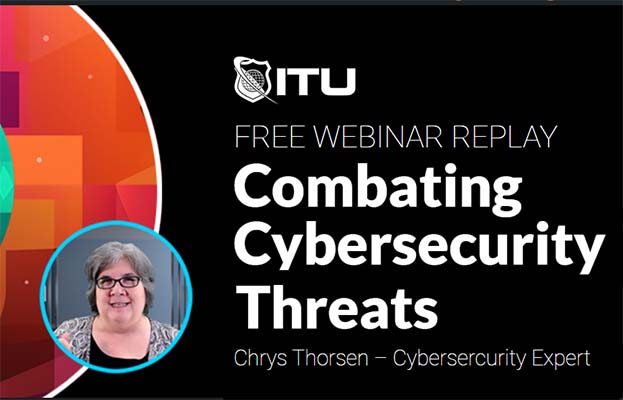In today’s interconnected world, it has become critical you know the answer to the question, “How Can You Protect Yourself From Social Engineering”. Cyber threats are no longer confined to technical exploits. One of the most potent and insidious forms of cyberattacks is social engineering. This method preys on human psychology and manipulation, tricking individuals into divulging sensitive information or performing actions that compromise their digital security. In this article, we’ll explore various strategies to protect yourself from social engineering attacks and maintain your online safety.
Understanding Social Engineering
Social engineering is a multifaceted cyber threat that operates at the intersection of technology and human psychology. At its core, it’s a form of manipulation where attackers exploit inherent human traits and emotions to deceive individuals into divulging sensitive information, performing actions, or making decisions that compromise their own security. Unlike traditional hacking methods that target technical vulnerabilities, social engineering preys on the human element, making it a formidable and often underestimated threat.
This art of deception comes in various forms, each meticulously crafted to manipulate victims into acting against their better judgment. Attackers play on factors like trust, curiosity, fear, urgency, and empathy, expertly tailoring their tactics to exploit individual susceptibilities. From the well-disguised phishing emails that mimic trusted organizations to the persuasive pretexting that fabricates convincing scenarios, social engineering thrives on the intricacies of human behavior.
Understanding social engineering is akin to unlocking the mind of the adversary. By studying the methods and motives behind these attacks, individuals and organizations can arm themselves with the knowledge needed to recognize and thwart manipulation attempts. Vigilance, skepticism, and a proactive approach to cybersecurity are essential components in the ongoing battle against this crafty and evolving threat. In a world where technology interweaves with human interaction, guarding against social engineering is not just a matter of protecting data; it’s about safeguarding the very foundations of trust and privacy in the digital age.
Sign Up For Our Free Webinar Replay, Combating Cybersecurity Threats
Join us and take advantage of a replay of our Webinar Series on Combating Cyber Threats. During this webinar, our expert discusses device baiting in this informational 90 minutes webinate
Common Forms of Social Engineering
1. Phishing
- Description: Phishing is the most prevalent form of social engineering. Attackers send deceptive emails, messages, or texts that appear legitimate, often mimicking well-known organizations, to trick recipients into clicking on malicious links or sharing sensitive information.
- How it Works: Phishing emails often create a sense of urgency, fear, or excitement, prompting recipients to take immediate action. The links lead to fake websites designed to steal login credentials or personal data.
2. Pretexting
- Description: Pretexting involves creating a fabricated scenario or pretext to manipulate a target into providing information or performing an action. Attackers may pose as a trusted individual or entity to gain the victim’s trust.
- How it Works: Attackers build a believable backstory to convince the victim that they have a legitimate reason for requesting sensitive information. For example, an attacker might pose as a bank representative requesting account details for security purposes.
3. Baiting
- Description: Baiting involves enticing victims with something appealing, like free software, music downloads, or USB drives left in public places. The bait is designed to exploit the victim’s curiosity or desire for something valuable.
- How it Works: Victims are lured into downloading malicious files or inserting infected USB drives into their devices. This action initiates a malware infection, compromising the victim’s system.
4. Tailgating (Piggybacking)
- Description: Tailgating occurs when an attacker gains physical access to a restricted area by closely following an authorized person. This can happen at office entrances, parking garages, or secured facilities.
- How it Works: The attacker takes advantage of the victim’s courtesy or reluctance to confront someone following closely. Once inside, the attacker can gain unauthorized access to systems or steal sensitive information.
5. Spear Phishing
- Description: Spear phishing is a targeted form of phishing where attackers customize their messages for specific individuals or organizations. The emails often contain personalized information to increase credibility.
- How it Works: Attackers gather information about their target from social media, public records, or previous breaches. This information is used to craft convincing emails that make victims more likely to fall for the scam.
6. Impersonation
- Description: Impersonation involves posing as a trusted entity, such as a coworker, friend, or service provider, to manipulate victims into taking actions they wouldn’t normally take.
- How it Works: Attackers might impersonate a colleague to request sensitive information or instruct the victim to perform an action that benefits the attacker. The victim is more likely to comply due to the trust associated with the impersonated identity.
7. Quizzes and Surveys
- Description: Attackers use quizzes or surveys as bait, promising rewards or entertainment in exchange for personal information. These quizzes can be found on social media platforms.
- How it Works: Victims answer seemingly innocent questions that actually reveal valuable information about them. Attackers can use this data for identity theft, password guessing, or other malicious activities.
Understanding these common forms of social engineering is essential for protecting yourself from cyberattacks. By staying vigilant, educating yourself, and practicing caution, you can significantly reduce the risk of falling victim to these manipulative tactics.

Cybersecurity Training Series – 15 Courses
Embark on a Thriving Cybersecurity Career! With our Ultimate Cyber Security training courses, you’ll dive into the world of ethical hacking, penetration testing, and network security. Our 15 comprehensive courses, led by industry experts, will equip you with essential Cybersecurity skills, setting you on the path to success in this ever-evolving field.
Protecting Yourself Against Social Engineering
- Develop Skepticism:Maintain a healthy dose of skepticism when dealing with unsolicited messages, emails, or phone calls. Always question the legitimacy of requests for sensitive information.
- Verify the Source:Before sharing information or taking action, verify the identity of the person or organization making the request. Use official contact information rather than relying solely on information provided in the communication.
- Beware of Urgency:Attackers often create a sense of urgency to pressure you into quick decisions. Take a step back and carefully assess the situation before acting.
- Educate Yourself:Stay informed about different social engineering techniques and tactics. This awareness will empower you to recognize and resist manipulation attempts.
- Implement Multi-Factor Authentication (MFA):Enable MFA wherever possible. This adds an extra layer of security by requiring additional verification beyond just a password.
- Secure Your Personal Information:Limit the amount of personal information available online. Be cautious about sharing sensitive data on social media platforms, as attackers often use this information for targeted attacks.
- Stay Updated:Keep your operating system, applications, and security software up to date. Many social engineering attacks exploit known vulnerabilities.
- Be Wary of Unsolicited Requests:Don’t click on links or download attachments from unknown sources. Verify the legitimacy of such requests through independent means.
- Don’t Succumb to Manipulation:Be aware of emotional manipulation tactics. Attackers might play on fear or empathy to trick you into divulging information.
- Report Suspicious Activity:If you encounter a potential social engineering attempt, report it to your organization’s IT department or relevant authorities. Reporting helps prevent future attacks.
Real-World Example: The CEO Fraud Scam
One prevalent social engineering tactic is the CEO fraud scam. Attackers impersonate company executives to trick employees into making unauthorized financial transactions. This scam highlights the importance of verifying requests, especially those involving sensitive actions or financial transfers.
Conclusion
As technology advances, so do the strategies of cybercriminals. Social engineering attacks capitalize on human vulnerabilities, making it crucial to remain vigilant and educated. By fostering skepticism, staying informed, and implementing security measures, you can effectively protect yourself from these manipulative tactics. Remember, your digital safety depends on your ability to recognize and resist the ploys of social engineering attackers.
Other Posts of Interest
Device Baiting and USB Drop Attacks: Unmasking the Cyber Threats
Mastering Password Policy Best Practices for Enhanced Digital Security
Mobile Device Security and Best Practices
Frequently Asked Questions about Protecting Yourself From Social Engineering Hacks
What role does awareness play in protecting against social engineering attacks?
Awareness is paramount. Recognizing the signs of manipulation and understanding common tactics empower individuals to question unusual requests and avoid falling victim to deceptive schemes.
How can you verify the authenticity of an email before responding to it?
Hover over links to preview their actual URLs without clicking. Check sender email addresses for slight misspellings or deviations. When in doubt, use official contact information to verify the request’s legitimacy.
What should you do if you receive an urgent email asking for sensitive information?
Pause and assess. Attackers often create urgency to force hasty decisions. Verify the request through another communication channel, like a phone call, before taking any action.
Why is oversharing on social media a risk when it comes to social engineering?
Cybercriminals use information from social media to craft convincing schemes. Oversharing provides attackers with personal details they can exploit for tailored manipulation attempts.
How can a strong cybersecurity culture within an organization contribute to defense against social engineering?
A strong cybersecurity culture promotes vigilance and knowledge sharing. When all members of an organization are aware and proactive, they collectively create a more resilient defense against social engineering hacks.

























